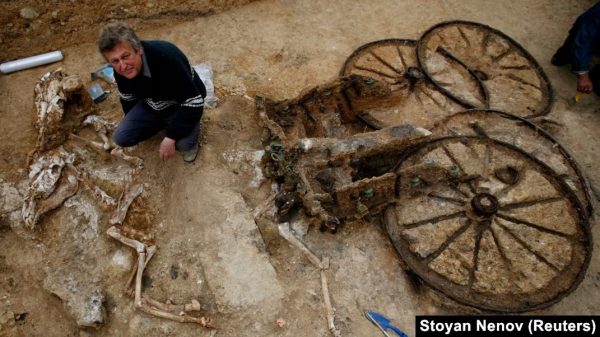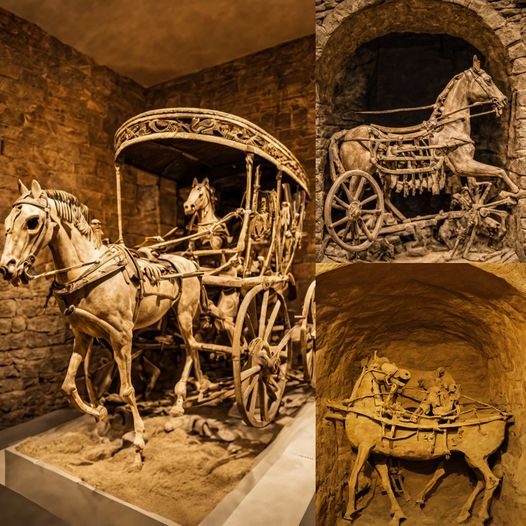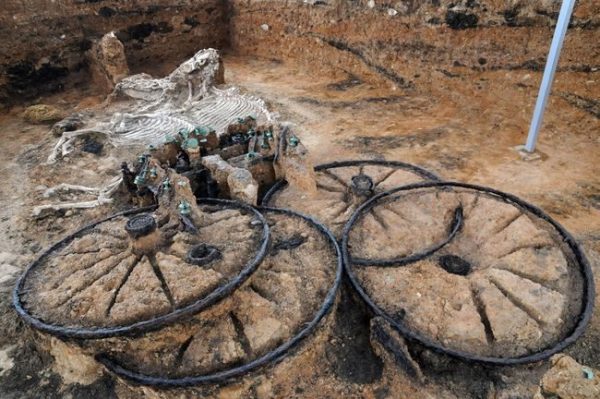
In a remarkable archaeological discovery, a 2,000-year-old wooden chariot, accompanied by the remains of two horses and a dog, has been unearthed in what is now Bulgaria. This extraordinary find offers a fascinating glimpse into the burial customs and societal practices of ancient Thrace.
Led by archaeologist Veselin Ignatov of the Istoricheski Muzej Nova Zagora, a museum in Bulgaria, the excavation of the chariot took place in 2008. Covered in bronze and adorned with scenes from Thracian mythology, the chariot is a testament to the craftsmanship and artistic expression of its time.

While its exact age remains uncertain, estimates suggest it may be closer to 1,800 years old.
Accompanying the chariot was the discovery of a brick tomb in 2009, containing the remains of a man adorned in what appears to be armor. This individual, possibly a nobleman or even a ruler, was buried with various artifacts, including gold coins, gold rings, and a silver cup depicting the Greek god Eros (known as Cupid in Roman mythology).

This burial reflects the wealth and status of ancient Thrace’s elite members.
The practice of chariot burials, such as this one, was common in Bulgaria, particularly during the time of the Roman Empire, which lasted roughly from 2,100 to 1,500 years ago. Veselin Ignatov noted in a paper published in 2007 in the journal Archaeologia Bulgarica that the custom of burying noblemen near chariots dates back approximately 2,500 years in Bulgaria.
Chariot burials hold significant cultural and historical importance, providing valuable insights into the social structure, beliefs, and rituals of ancient civilizations.
The discovery of the Thracian chariot, along with its accompanying horse and dog remains, enriches our understanding of Thrace’s rich heritage and its interactions with neighboring cultures during antiquity.
The prominence of this discovery is evident not only in archaeological circles but also in popular culture, as evidenced by the widespread attention it has garnered on platforms like Reddit, where a photo of the chariot amassed over 65,000 likes. This heightened interest underscores the universal fascination with uncovering relics from the past and piecing together the stories they hold.
As ongoing research and analysis shed further light on this remarkable find, it serves as a poignant reminder of the enduring legacy of ancient civilizations and the importance of preserving and studying our shared cultural heritage.
The Thracian chariot burial stands as a testament to the ingenuity, artistry, and cultural richness of the peoples who once inhabited the lands of present-day Bulgaria.





